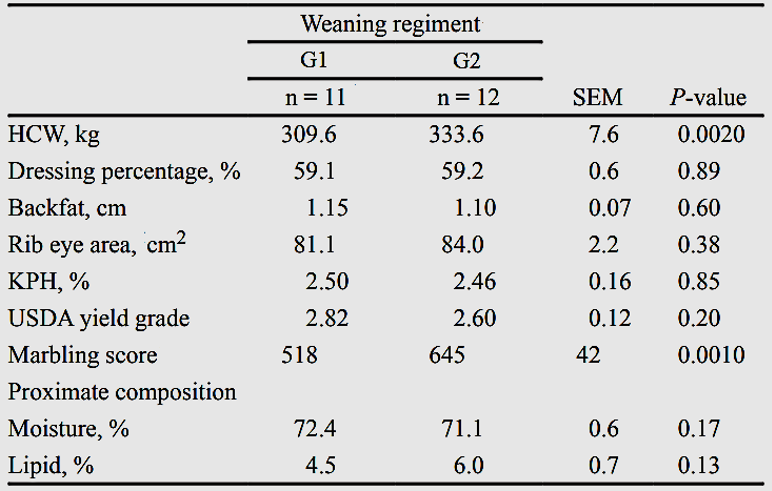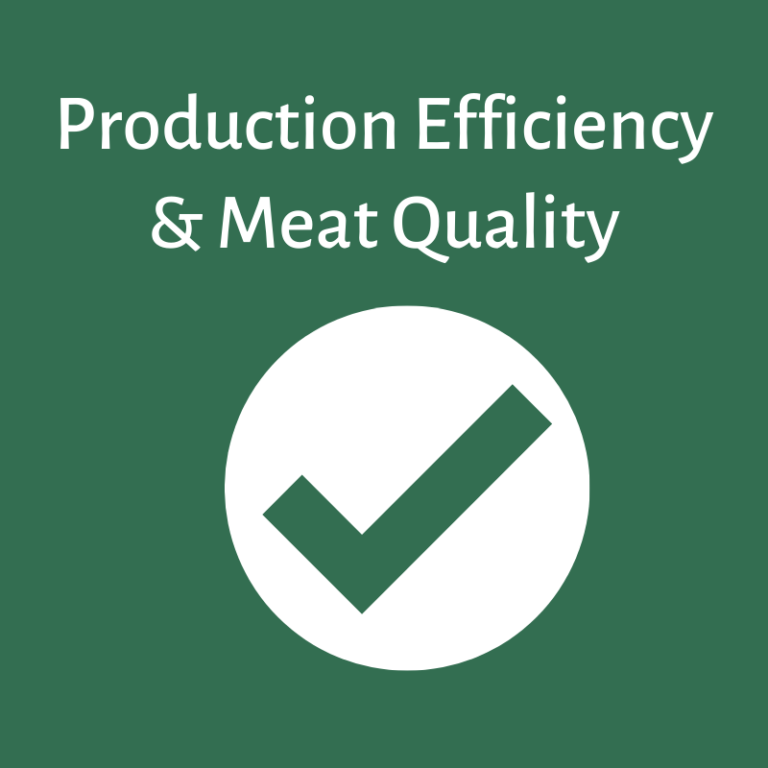Early weaning of calves is known to improve the condition of the cows, promoting adequate performance in the next reproductive cycle. In addition, early weaning entering a high-energy diet results in greater fat deposition and suggests early postnatal metabolic events could be exploited as a management tool to improve cattle value. However, the feed costs could be greater due to increased days consuming high concentrate feed. So, an alternative strategy would be to wean early and feed high concentrate feed for a short period before placing on pasture when forage availability is high.
In a research study conducted in USA (Scheffler et al., 2014) early weaning calves consuming a high concentrate diet for 148 d, produced carcasses of higher quality compared with a conventional weaning. For the study, the animals (offspring from Angus breed) were divided into two groups: G1 – is the conventional weaning, consisted of calves that stayed with their dams to graze until weaning at 253 d of age, and G2 - the early weaning group (weaned at 105 d + 148 d on a high concentrate diet = 253 d). After completing 253 days after birth, both groups were combined and grazed on pastures containing the same forage type as pre-weaning. The groups were moved between pastures to ensure a forage availability of 1,685 to 2,250 kg/ha.
At approximately 407 days of age, both groups were placed in a feedlot equipped with Calan gates and fed a corn silage-based ration ad libitum, starting with 25% grain concentrate to a final concentrate of 75% (dry matter basis) by 35 days. The diets were formulated to meet the nutrient requirements according to NRC (1996). As results, early-weaned and concentrate-fed calves produced heavier carcasses (564 vs. 524 kg) with higher marbling scores (645 vs. 517), as shown in Table 1. However, the feedlot performance and USDA yield grade were similar between treatments.
 Table 1. Carcass characteristic of calves in different weaning regiments (Adapted from Scheffler et al., 2014).
Table 1. Carcass characteristic of calves in different weaning regiments (Adapted from Scheffler et al., 2014).
Early weaning and feeding a high concentrate before a typical grazing period and feedlot entry, did not improve feedlot performance, but this management scheme could be effective to improve marbling deposition and increase hot carcass weight compared with a traditional production system with conventional weaning. This management strategy also allows farmers to adapt to seasonal variation in forage availability and calves could be feedlot fed during the time of reduced pasture-based forage.
Authors: Jakeline Vieira Romero and Virginia C. Resconi.
Impact on:
 | The cost-effectiveness of this feeding strategy should be analysed. |
 | It can help to increase the body conditions of dams. |
 | Increased hot carcass weight and marbling scores. Optimization of pasture use in periods of greater forage growth. It can improve reproduction efficiency. |
 | It may allow a reduced time on feeding and therefore, less emissions. |
Source of information:
- Scheffler et al., 2014. Journal of Animal Science. 92:320-324 https://doi.org/10.2527/jas.2012-6209
Further information:
- Blanco, M., A. Sanz, A. Bernués, R. Revilla, and I. Casasús (2005). Efecto del destete precoz sobre los rendimientos técnico-económicos de los sistemas de producción de terneros en condiciones de montaña. Información Técnica Económica Agraria, 26 (I): 213-215.
- Casasús, I. et al. (2005). 13th Meeting of the FAO-CIHEAM Mountain Pastures Network 2005. https://www.researchgate.net/publication/236845207
- Koch et al., 2018. Meat and Muscle Biology. 2:321-333. https://doi.org/10.22175/mmb2018.06.0017